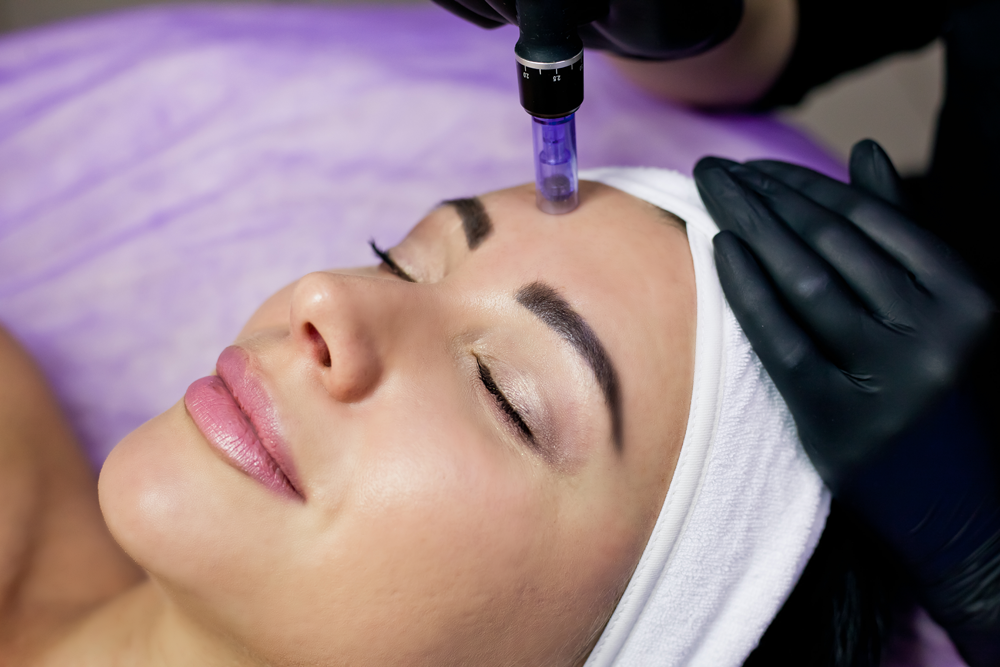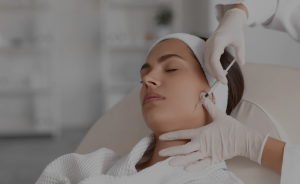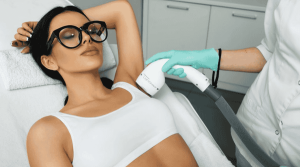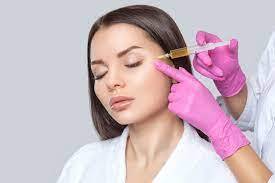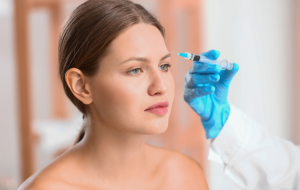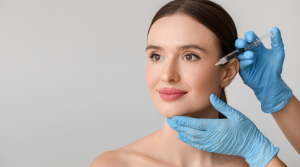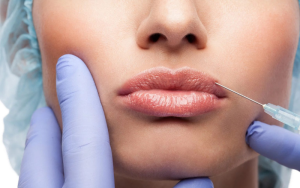Microneedling has emerged as a powerful skin rejuvenation method, touted by many in aesthetic dermatology for its ability to diminish the appearance of facial acne scars, wrinkles, and stretch marks. By encouraging collagen and elastin growth through controlled skin injury, microneedling—often termed collagen induction therapy—can transform uneven or scarred complexions into a more youthful appearance. In this blog, we will explore how microneedling addresses acne scarring, outline the risks involved, and compare it to other Cosmetic Procedures such as chemical peels or LASER treatment. If you’ve been searching for an effective, minimally invasive procedure, read on to discover whether microneedling could be right for you.
What is Microneedling?
Microneedling, also known as Percutaneous collagen induction therapy, is a minimally invasive procedure designed to stimulate the natural healing process of your skin. It uses Microneedling Devices—such as microneedling pens—to create microscopic channels or punctures on the stratum corneum (the outermost layer of the skin). This controlled skin injury triggers a cascade of healing events, accelerating collagen production and improving skin texture.
Over the years, microneedling has evolved through various technologies and microneedling techniques. Today’s advanced devices rely on precision-engineered needles made from materials like stainless steel. These devices treat a wide range of skin concerns, from acne scars to uneven skin tone, facial wrinkles, and even stretch marks. Microneedling can also support the delivery of topical serums—such as hyaluronic acid serums—deep into the skin barrier, maximizing their benefits.
How Does Microneedling Work?
The Mechanism of Action
During microneedling procedures, multiple tiny needles penetrate the dead skin cells within the stratum corneum to reach deeper layers. This carefully managed minimal trauma kick-starts your body’s natural process of repair. As blood flows to the micro-injuries, blood vessels dilate, delivering oxygen, nutrients, and growth factors. In effect, the healing process is accelerated, leading to improved collagen and elastin synthesis. Over time, this production of collagen remodels the skin tissue, resulting in reduced scarring, fewer wrinkles, and more even skin texture.
Role of Collagen Production
Collagen production is at the core of microneedling’s rejuvenating power. By prompting the skin to regenerate, microneedling aids in correcting acne scarring, refining uneven skin texture, and reducing appearance of scars caused by stretch marks, active acne, or even surgical scars. Collagen—a key protein in connective tissues—helps maintain skin elasticity and structural support. Enhanced collagen induction therapy means that each microneedling session helps fill in depressed areas like ice-pick scars, deep boxcar scars, and linear scars more effectively.
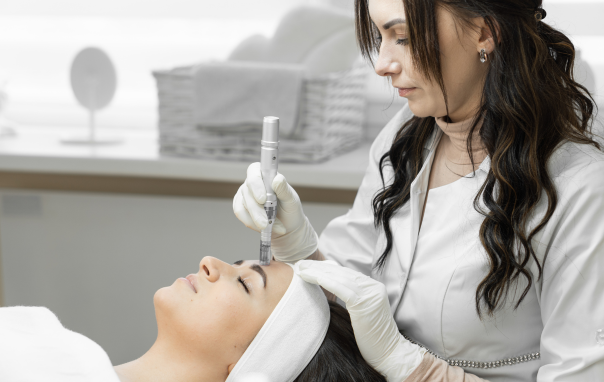
Instruments Used in Microneedling
Overview of Devices
Numerous Microneedling Devices are on the market, ranging from basic dermal rollers to sophisticated motorized microneedling pens. Some combine microneedling with radio frequency (Radiofrequency Microneedling) for additional skin tightening. Others include built-in infusion systems for topical nutrients, platelet rich or platelet-rich plasma (plasma) therapies, and specialized delivery systems. Researchers and plastic surgeons have tested these medical devices in various clinical trial and animal experiments settings, confirming microneedling’s efficacy in improvement in skin tone, boosting blood circulation, and stimulating new collagen.
Spotlight on DermaPen DP4
Among the modern devices, the DermaPen DP4—developed by Dp Derm—is celebrated for its cutting-edge technology. It offers precise adjustments for needle depth, which is crucial for addressing the depth of acne scarring. The DermaPen’s safe technology helps deliver consistent results, even on darker skin tones or darker skin types. Thanks to its adjustable speed and needle settings, providers can tailor treatment for everything from superficial microneedling techniques on mild facial acne scars to deeper sessions for severe uneven skin texture.
Preparing for Microneedling Treatment
Importance of Skin Assessment
Before any microneedling procedure, a thorough evaluation by a health care providers team is essential. Each individual skin type needs a tailored plan. A specialist will examine the type of skin issue, including the appearance of scars, acne scarring, stretch, or areas of skin laxity such as the neck where appearance of neck wrinkles might be a concern. This pre-assessment helps determine whether you’re a candidate for microneedling or if alternative treatments, like LASER treatment or Customized peels, would better suit your skincare regime.
Application of Numbing Cream
Prior to your session, an anesthetic cream—often referred to as Numbing cream—may be applied. This topical anesthetics step reduces discomfort during the micro-injuries, creating a more calming feeling and making the experience comfortable for the patient. Some individuals will need additional measures if they are prone to cold sores, requiring antiviral medication to mitigate outbreak risks. Likewise, if you’re on acne medication or certain other medications, your provider might adjust your regimen to ensure safe microneedling.
The Microneedling Procedure
Step-by-Step Process
- Cleansing: The skin is thoroughly cleansed to remove skin care products, makeup, and oils.
- Numbing: A numbing cream is applied and left for the recommended time, typically 20–30 minutes.
- Device Setup: The chosen microneedling device—often a pen or motorized roller—is calibrated to the appropriate needle depth based on your skin concerns.
- Microneedling Passes: The microneedling pens create micro-channels in the skin barrier with systematic passes across the treatment area (face, neck, or even the body for appearance of stretch marks).
- Topical Serums: Once the micro-channels are open, topical serums like hyaluronic acid serums or platelet-rich plasma (rich plasma) can be applied, allowing deeper TRANSDERMAL DELIVERY.
- Soothing: Post-procedure, a calming cream or serum is applied to reduce redness and inflammation, supporting the healing process.
Duration and Frequency of Sessions
Each session typically lasts 30 to 60 minutes, depending on the size and severity of the treatment area. For best results, treatment sessions are often spaced 4–6 weeks apart. The total number of microneedling sessions required will vary based on factors like depth of acne scarring, individual skin response, and severity of the targeted scarring or wrinkles.
Post-Treatment Care
Tips for Optimal Recovery
- Gentle Cleansing: Use mild, fragrance-free cleansers to avoid irritating newly treated skin.
- Sun Protection: Newly microneedled skin is more photosensitive. Applying SPF helps prevent uneven skin tone and promotes healthy skin rejuvenation.
- Hydration: Drinking ample water supports the natural healing process and keeps skin moisturized from within.
- Avoid Harsh Products: Temporarily discontinue strong exfoliants, retinoids, or harsh scrubs. Reintroduce them gradually as advised by your provider.
Management of Side Effects
Common risks include mild swelling, redness, and pinpoint bleeding—signs that the process of repair is well underway. Some dryness or flaking may appear a few days later, as dead cells shed, revealing fresher complexion. Less frequently, individuals might experience adverse events like infection, post-inflammatory hyperpigmentation (particularly in darker skin types), or allergic responses to certain products. Reputable clinics mitigate these health risks by maintaining sterile protocols and employing skilled staff.
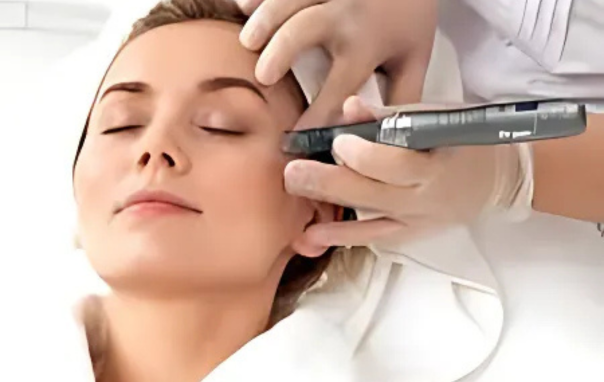
Effectiveness of Microneedling for Acne Scars
Comparison of Scar Types
Microneedling yields particularly good results for ice-pick scars and shallow boxcar scars. It also benefits linear scars or post-surgical marks by enhancing dermal remodeling. However, more severe deep boxcar scars or widespread active acne might require a combination approach—possibly with other Aesthetic treatments like chemical peels or even Plastic Surgery for more advanced scarring.
Longevity of Results
Tangible improvements in skin texture generally become more evident 4–6 weeks post-session, as collagen production ramps up. With proper maintenance—like consistent sun protection and an ongoing skincare regimen—results can last for several months or longer. Periodic maintenance sessions help keep your complexion radiant, as each microneedling round builds upon the production of collagen started by previous treatments.
Microneedling vs Other Treatments
Comparison with Laser Therapy
While both microneedling and LASER treatment aim to improve skin concerns such as acne scarring or wrinkles, their mechanisms differ. Lasers use light energy, which can be less safe for darker skin tones due to higher pigment sensitivity. Microneedling, on the other hand, involves a mechanical approach that is often more suitable for a wide range of skin types, including darker skin types. However, lasers may yield quicker results for severe facial wrinkles or extensive skin tightening, especially when performed by a board-certified plastic surgeon.
Comparison with Chemical Peels
Both microneedling and chemical peels (or peel treatments) address uneven skin texture and wrinkles. Peels dissolve the dead skin layers to reveal smoother layers underneath, whereas microneedling triggers a natural healing process from within. Peels are frequently used for superficial textural concerns, but for facial acne scars and deeper scarring, microneedling offers the advantage of stimulating long-term collagen remodeling. In some cases, combining both—under professional guidance—can yield faster, more comprehensive improvement in appearance of skin.
Potential Side Effects and Complications
Common Reactions
- Redness: Mild to moderate redness is common, typically subsiding within a few days.
- Dryness and Flaking: These symptoms indicate that the skin is shedding dead cells.
- Minor Discomfort: Some soreness or tightness is normal as the skin condition adjusts to the micro-injuries.
Rare but Serious Risks
Although microneedling is considered a relatively safe technology, complications do happen. These can include:
- Infection: If the microneedling devices are not sterilized properly, or if the post-procedural wound care is neglected.
- Hyperpigmentation: Particularly in darker skin tones where melanin activity is higher, leading to possible uneven skin tone.
- Keloid Formation: Rare but possible in individuals prone to excessive scar tissue formation.
- Blood-Borne Infections: Improper blood contact hygiene can create health risks.
Consult with health care providers before proceeding if you have a history of cold sores, or if you’re prone to developing hypertrophic or keloid scars.
Why Choose Beauty Aesthetics, Toronto for Microneedling?
Beauty Aesthetics, Toronto, stands at the forefront of microneedling treatment and other skin treatments by providing clients with a cutting-edge technology and safe technology environment. Our Amazing staff and cooperative staff are extensively trained in various microneedling techniques, from standard microneedling pens to Radiofrequency Microneedling. Equipped with devices like the DermaPen DP4, our approach ensures minimal downtime and robust results for a range of skin concerns, including facial acne scars, appearance of stretch marks, and frown lines or facial wrinkles.
We collaborate with Crown Providers, Jack Nathan Health, and other medical organizations, integrating the latest breakthroughs in aesthetic dermatology and Plastic Surgery. We also offer laser hair removal, hair restoration services, and Customized peels—making us a one-stop center for comprehensive skincare. Located near Mayfield Rd in Mayfield Rd Brampton (Mayfield RdBrampton), our BramptonJack Nathan Medspa is easy to access, and our approach to skincare focuses on your comfort, budget, and personal treatment goals. Our amazing experience!Laser hair services, Crown Aesthetics solutions, and the presence of Nurse Pegah on the team assure that every patient receives advanced care and up-to-date technologies. Whether you’re dealing with alopecia, Androgenetic alopecia (or androgenic alopecia), or acne scarring, Beauty Aesthetics, Toronto, offers a wide range of aesthetic treatments so you never waste your precious time or money for products that don’t deliver results.
Conclusion: Is Microneedling Right for You?
Microneedling is a proven method for enhancing skin health through collagen induction therapy, offering improvements in acne scarring, wrinkles, and skin texture. With minimal downtime and a natural process of healing, it can be a valuable part of any modern skincare regime. However, not everyone is a candidate for microneedling, especially those with certain medical devices implanted or active acne flares. By consulting a qualified provider—such as the experts at Beauty Aesthetics, Toronto—you can determine whether microneedling is the best route to a more radiant complexion and restored confidence.

